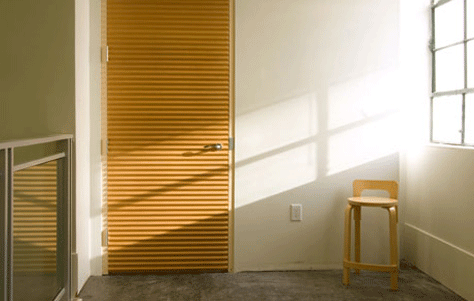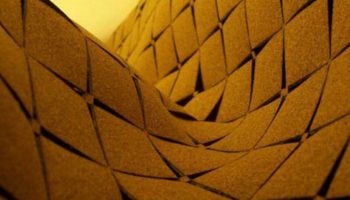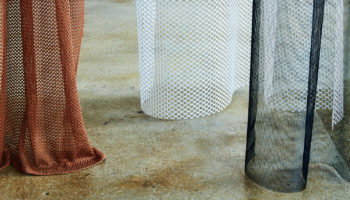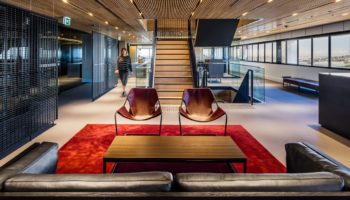Corelam Corrugated Sound Control Plywood
Corrugation is often associated with corrugated cardboard or corrugated metal decking. Designed for strength, corrugation helps stiffen a material without added weight, allowing for stronger, lighter pieces. There’s something inherently beautiful about the wave of a corrugated material, although the typical uses don’t put corrugation in the spot light. Corelam is taking advantage of the many opportunities of corrugation to create its unique line of products.
Corelam Mobilcore

Corelam is an FSC certified veneer plywood product that is multi-use and produced in three categories of panels. Soundcore products, which have enhanced acoustic properties, Piececore products, which are panels suitable for walls or ceilings and Mobilcore products, which are adaptations of Corelam to doors, furniture, etc together make up the Corelam family. All the products have a recognizable wave pattern that gives a decorative quality to a simple product.

Renewable Canadian and U.S. sourced FSC veneers are used to manufacture Corelam, which is laminated with adhesives that do not off-gas formaldehyde or other volatile organic compounds. Corelam is one of the first commercial applications of the corrugation process to wood. After year of development, a custom press was constructed which is capable of delivering 1000 square feet of panel product per day. Corrugation strengths a material with less physical mass, meaning built-in sustainability for every product.

About the Company: Corelam is manufactured by Christian Blyt and his company GreenHus Design Ltd. which is located in Vancouver, BC Canada. New to the market in 2010 is Corelam, a family of corrugated plywood products developed by the company, and produced on a custom designed and purpose-built press in Vancouver. Through the assistance of the Business Innovation Partnership (BIP), the technical resources of FPInnovations, and the Acoustics and Noise Control Lab in the Mechanical Engineering Department of UBC worked with GreenHus Design Ltd. to explore and test Corelam’s acoustic properties, resulting in the fine quality product that exists today.
via Jetson Green




Leave a Reply